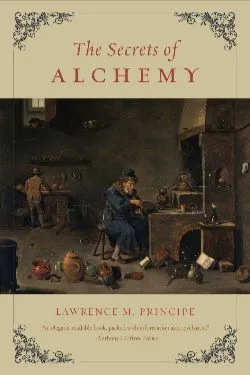
I stumbled upon this book thanks to Reddit. Someone had asked which works were the best introductions to alchemy, and Principe’s book was the most popular. It’s easy to see why.
The Secrets of Alchemy was written for a popular audience at a point of critical interest in the scholarship. For so long, Western esotericism hadn’t been recognized as a field of serious scholarship, but some significant works were published and these attitudes have shifted dramatically.
While this book does theoretically cover the history of alchemy since its origins in Roman Egypt (although it potentially began as early as the Hellenistic period), the most attention is given to the Early Modern period: from the Renaissance to the Enlightenment.
Perhaps the greatest strength of this book is its examination of alchemy as a material discipline. So much is made of its religious, spiritual, and esoteric elements that we often mark it off as being entirely “unscientific.” In Principe’s view, this is wrong-headed. In fact, while alchemy was deeply tied to spiritual practice, it was not more so than other disciplines. The view of alchemy as something entirely pseudoscientific, or unscientific, has as much to do with frauds receiving patronage and occult revivals as it does the state of the “alchemy” as an area of inquiry.
Alchemists really did engage with the material world, and they weren’t dilletantes: they were highly theoretical, building off of figures like Aristotle, Galen, and numerous later Arab and Persian thinkers. At the same time, they were able to transform some metals into other metals: although there was no success in transforming lead into gold, alchemists’ practices threatened currency crises in the pre-modern period due to their ability to counterfeit money.
Part of their limitation was the belief that there was only seven metals: gold, silver, copper (which I learned is etymologically related to “Cyprus”), tin, iron, lead, and quicksilver. The metals were also called the name of their ruling planet, which is why we call quicksilver “Mercury.” It would not be unusual to also call copper “Venus,” iron “Mars,” or lead “Saturn.”
The traditional view was that all metals had a body (which was always quicksilver) and a spirit (defined by the elemental qualities of gaseous sulfur). The sulfur imbued Mercury with its qualia, and ensured that one metal could become another.
The greatest part of the book is that Principe, the author, himself has dabbled with some of these alchemical recipes: we learn that one metal changed to another not because the process the author outlines, but because he used iron utensils. We join him in deciphering esoteric texts, and witness some of his successes along the way. Principe’s experiments bring alchemy to life not as “woo” but as a meaningful practice.
The book is rich with insights about how pre-modern period thought about the world in fundamentally different ways than we do, including the turn “inspiration” referring to tapping into the source of all creativity (the Spirit!).
This book is so good, and it’s well worth the time.